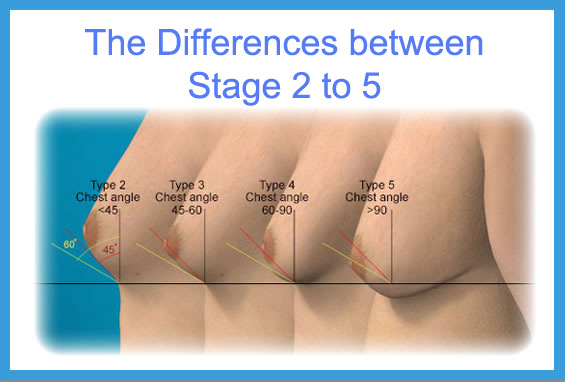Gynecomastia is a benign enlargement of the male breast (usually bilateral but sometimes unilateral) resulting from a proliferation of the glandular component of the breast. It is defined clinically by the presence of a rubbery or firm mass extending concentrically from the nipples. Gynecomastia should be differentiated from pseudogynecomastia (lipomastia), which is characterized by fat deposition without glandular proliferation.
In 1972, there were only three grades of Gynecomastia as florid, intermediate and Fibrous.
In 2003, there is a new definitionof Gynecomastia as below:
![]()
【Stage 1】
Preadolescent; only papillae are elevated.
【Stage 2】
Breast bud and papilla are elevated and a small mount is present; areola diameter is enlarged.
【Stage 3】
Further enlargement of breast mound; increased palpable glandular tissue.
【Stage 4】
Areola and papilla are elevated to form a second mound above the level of the rest of the breast.
【Stage 5】
Adult mature breast; recession of areola to the mound of breast tissue, rounding of the breast mound,
and projection of only the papilla are evident.







